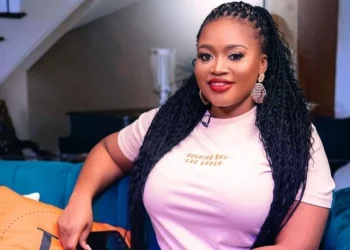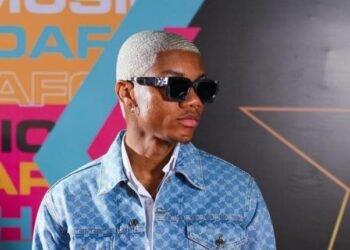The glitz and glamour of the red carpet have long captivated the public’s imagination, showcasing the pinnacle of fashion and design.
Yet, beneath the shimmering surface lies a troubling reality: the immense pressure placed on designers to craft over-the-top creations for celebrities.
As the stakes rise, so does the expectation for jaw-dropping, extravagant looks that often overshadow the fundamental purpose of fashion—self-expression and individuality.
The red carpet has evolved from a simple walkway to a battleground for fashion supremacy, where designers vie for attention and acclaim. As celebrities don their most extravagant outfits, the expectation for opulence has reached unprecedented heights.
Designers are often caught in a relentless cycle of outdoing one another, leading to creations that are not only impractical but also disconnected from the everyday experiences of the average consumer.
This phenomenon raises critical questions about the role of fashion in society. Is it merely a spectacle to be consumed, or should it serve as a reflection of personal style and cultural identity?
In an exclusive interview with the Vaultz News, an entertainment pundit, Event Manager, Consultant, and Evolve Africa Company Limited CEO, Brandford Ofori Nkuah, shared his perspective on the red carpet being a competitive space for fashion designers.
According to him, the red carpet is indeed a highly competitive space for designers, adding that the drive for recognition, prestige, and the desire to make a lasting impression on the audience and industry insiders fuels this competition.
“Designers aim to outdo one another, pushing the boundaries of creativity and extravagance to secure their place in the spotlight and potentially boost their careers. The pursuit of viral moments and critical acclaim can be intense, making it a challenging yet dynamic environment for designers to showcase their talent.”
Brandford Ofori Nkuah
The CEO of Evolve Africa Company Limited mentioned that designers can strike a balance between creating show-stopping looks and preserving their unique voice by staying true to their aesthetic while incorporating elements that cater to the celebrity’s style and the event’s theme.

He disclosed that they can infuse their signature touches into the design while ensuring it remains attention-grabbing and relevant. “Collaborating closely with the celebrity to understand their vision and preferences also helps designers create a look that’s both show-stopping and authentic to their creative voice,” he added.
Nana Poku Ashis commented on the “mounting pressure” on designers due to red carpet demands. However, Brandford explained that pressure on designers is indeed real and intense.
“With the constant scrutiny from the media, public, and industry insiders, designers face high expectations to deliver flawless, show-stopping looks. This pressure can be overwhelming, affecting their creative process, mental health, and overall well-being. The fear of criticism, comparison, and potential impact on their career can be daunting, making it a high-stakes environment for designers.”
Brandford Ofori Nkuah
The most significant consequence of this pressure is the potential stifling of creativity. When designers feel compelled to produce extravagant looks, they resort to formulaic designs that prioritize shock value over originality.
The risk of creating something that is merely a rehash of past trends looms large, as the industry becomes increasingly saturated with similar aesthetics.
This trend not only dilutes the artistry of fashion but also perpetuates a culture of excess that alienates consumers who seek relatable and accessible styles.
In an age where inclusivity and diversity are paramount, the relentless pursuit of opulence creates a disconnect between high fashion and the everyday individual.
Social Media’s Influence on Red Carpet Fashion

Moreover, Brandford shared his opinion on how social media has reshaped the goals and metrics of success in red carpet fashion.
He asserted that social media has significantly reshaped red carpet fashion by shifting the focus from exclusive, high-end events to broader online engagement.
“Designers now aim to create looks that not only impress on the red carpet but also go viral on social media platforms. Success is increasingly measured by online buzz, likes, shares, and media coverage, rather than just critical acclaim or industry recognition. This shift has amplified the pressure on designers to create attention-grabbing, photogenic outfits that resonate with a wider online audience.”
Brandford Ofori Nkuah
Looking specifically at the 2025 TGMAs, the Event Manager revealed the trends that stood out to him, adding the direction the red carpet fashion is heading.
“The organisers introduced a strict invitation policy to ensure order and quality on the red carpet, which seemed to pay off. This move aimed to address long-standing concerns about the red carpet segment and elevate the event’s overall experience.
“These trends suggest that red carpet fashion is heading towards a more experimental, culturally conscious, and elegant direction, with a focus on showcasing local talent and creativity. The emphasis on traditional Ghanaian aesthetics with modern twists also highlights the growing importance of cultural identity in fashion.”
Brandford Ofori Nkuah
Designers should be encouraged to embrace creativity that prioritizes authenticity over extravagance. By celebrating designs that reflect personal stories and cultural influences, the fashion industry reclaims the red carpet as a space for genuine expression rather than mere spectacle.
Additionally, consumers must also play a role in this shift by supporting designers who prioritize sustainability, inclusivity, and creativity over the fleeting allure of extravagant looks.
While the red carpet remains a celebrated aspect of the fashion industry, the pressure on designers to create over-the-top looks detracts from the true spirit of fashion.
It is time to shift the focus from the extraordinary to the extraordinary within the ordinary, allowing fashion to inspire rather than intimidate.
Only then can designers create a more inclusive and creative fashion landscape that reflects the diverse tapestry of human experience.
READ ALSO: Chief Justice’s Mentorship Program Transforming Lives of Kayayei Girls





















